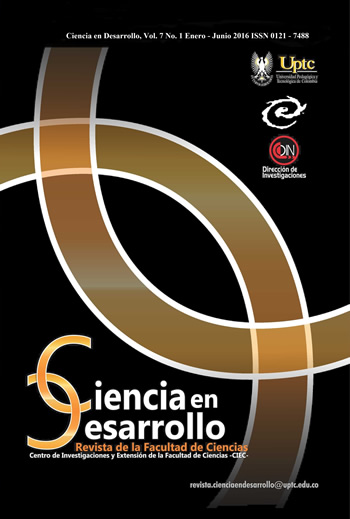Efecto de la censura informativa sobre la potencia de algunas pruebas tipo Log-Rank.

Resumen
El análisis de supervivencia consiste en un conjunto de técnicas para analizar el tiempo de seguimiento hasta la ocurrencia de un evento de interés, también denominado tiempo de vida, el cual se observa completa o parcialmente. En la práctica, un problema frecuente consiste en comparar las experiencias de supervivencia de al menos dos grupos bajo estudio. La estrategia de análisis más común consiste en usar pruebas Log-Rank, pero estas no distinguen si el mecanismo de censura es informativo o no. En este trabajo se evaluó, bajo diferentes escenarios de simulación, la potencia estimada de algunas pruebas Log-Rank cuando los datos presentan censura informativa. Se encontró evidencia de un mejor desempeño de la prueba de Wilcoxon.
Palabras clave
Análisis de supervivencia, censura informativa, tiempo de falla, pruebas Log-Rank, potencia de la prueba. (Failure Time, Informative, Log-Rank Tests Censoring, Survival Analysis, Power of a Test.)
Citas
- D. Collett, “Modelling Survival Data in Medical Research”, Chapman & Hall, New York, 2003.
- D. G. Kleinbaum, “Survival analysis”, Springer, Verlag, New York, 1995. DOI: https://doi.org/10.1007/978-1-4757-2555-1
- P. D. Allison, “Survival Analysis Using the SAS System: A Practical Guide”, SAS Institute Inc, New York, 2000.
- M. Pintilie, “Competing Risks”, John Willey & Sons, England, 2006. DOI: https://doi.org/10.1002/9780470870709
- M. Tableman, and J. Sung, Survival Analysis Using S, Chapman & Hall, New York, 2003. DOI: https://doi.org/10.1201/b16988
- F. Wilcoxon, “Individual Comparisons by Ranking Methods”, Journal of the Royal statistical Society, vol. 1, pp. 80-83, 1945. DOI: https://doi.org/10.2307/3001968
- R. Peto and J. Peto, “Asymptotically Efficient Rank Invariant Test Procedures”, Journal of the Royal statistical Society, vol. 135, pp. 185-207, 1972. DOI: https://doi.org/10.2307/2344317
- R. E. Tarone, and J. Ware, ‘On distributionfree tests for equality of survival distributions”, Biometrika, vol. 64, pp. 156-160, 1972. DOI: https://doi.org/10.1093/biomet/64.1.156
- A. Davey, and Savla J., “ Statistical power analysis with missing data: a structural equation modeling approach”, Routledge Taylor & Francis Group ,New York, 2010. DOI: https://doi.org/10.4324/9780203866955
- J. Yan, “Enjoy the Joy of Copulas”, Journal of Statistical Software, vol. 21, pp. 1-21, 2007. DOI: https://doi.org/10.18637/jss.v021.i04
- D. M. Dominique, and S. Kotz, “Correlation and Dependence”, Imperial College Press, London,
- R. B. Nelsen, “An introduction to Copulas”, Springer , New York, 2006.
- G. Escarela and J. Carriere, “Fitting competing risks with an assumed copula”, Statistical Methods in Medical Research 12, New York, 2003. DOI: https://doi.org/10.1191/0962280203sm335ra
- C. Genest, “Frank’s Family of Bivariate Distributions”, Biometrika, vol. 74, pp. 549-555, 1987. DOI: https://doi.org/10.1093/biomet/74.3.549